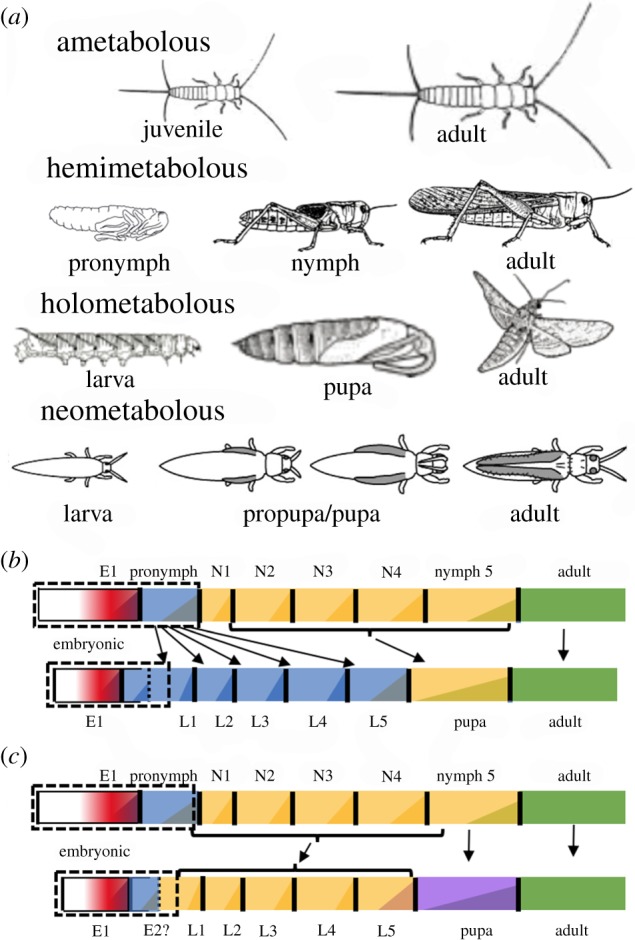Figure 1.

Life-history strategies in the insects. (a) Various life-history strategies characterized by silverfish, grasshoppers, sphinx moths and thrips, respectively. (b and c) The two major hypotheses for the evolution of the holometabolous stages from an unknown hemimetabolous ancestor. In (b), the larva arose from conversion of an embryonic stage (the pronymph) into the free-living, feeding larva and the nymphal stages were reduced to a non-feeding, transitional stage, the pupa [2–4]. In (c), nymphs and larvae are considered equivalent and the last nymphal instar was modified into the transitional pupal stage [5,6]. (Online version in colour.)
